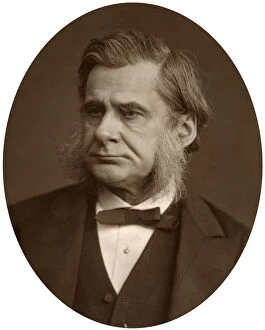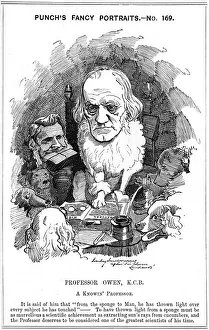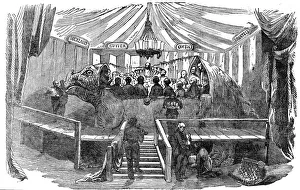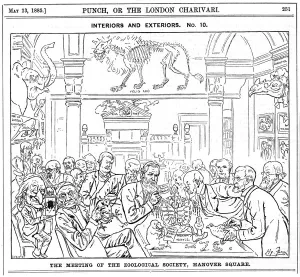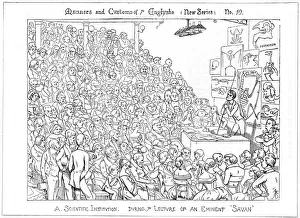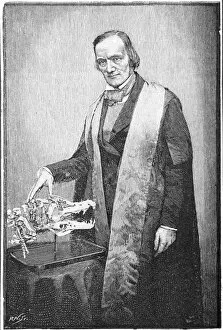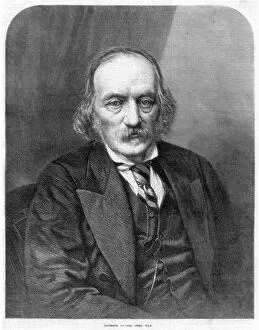Professor Sir Richard Owen Collection
Professor Sir Richard Owen was an eminent English zoologist who made significant contributions to the field of anatomy and paleontology
All Professionally Made to Order for Quick Shipping
Professor Sir Richard Owen was an eminent English zoologist who made significant contributions to the field of anatomy and paleontology. Born in 1804, he became widely known for his extensive research on various animal species during the late 19th century. Throughout his career, Richard Owen collaborated with other renowned scientists such as Thomas Henry Huxley. Their partnership is beautifully depicted in Edward Linley Sambourne's artwork titled "Water Baby being examined by Richard Owen and T. H. Huxley. " This painting captures their dedication to scientific exploration and their meticulous examination of specimens. Owen's expertise earned him recognition from prestigious institutions like the Royal Zoological Society, where he attended meetings alongside fellow naturalists. Harry Furniss artistically portrays one such gathering in his masterpiece "The Meeting of the (Royal) Zoological Society, Hanover Square, London. " The painting showcases a room filled with passionate individuals discussing groundbreaking discoveries. Not only did Owen excel in academia, but he also had a knack for captivating audiences through lectures. In Richard Doyle's artwork titled "A Scientific Institution, " we witness an enraptured crowd listening attentively to Owen's lecture while surrounded by fascinating exhibits. Owen's passion extended beyond academic pursuits; he played a pivotal role in popularizing science among the general public. One notable example is seen at Crystal Palace on New Year's Eve 1853 when naturalists dined inside a model dinosaur structure. This event brought science closer to people and sparked curiosity about prehistoric creatures. Richard Owen was not only admired for his intellect but also recognized for his achievements within society. His portrait by John & Charles Watkins showcases him as a distinguished figure during the 1860s, radiating confidence and authority befitting his status as an esteemed scientist. In Lock & Whitfield’s portraits from different years -1878 and 1880- we see how age gracefully adorned Professor Thomas Henry Huxley alongside Sir Richard Owen.

